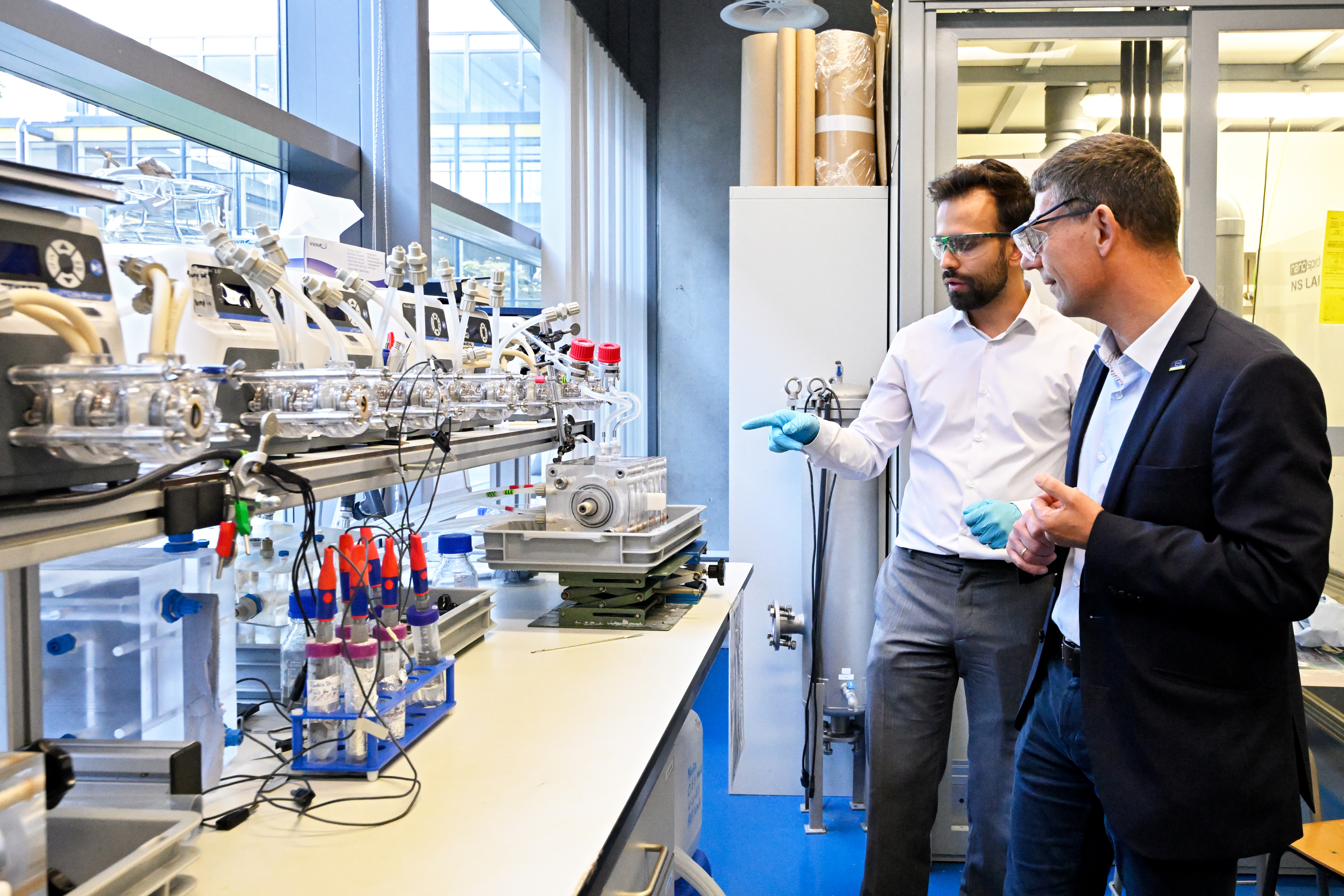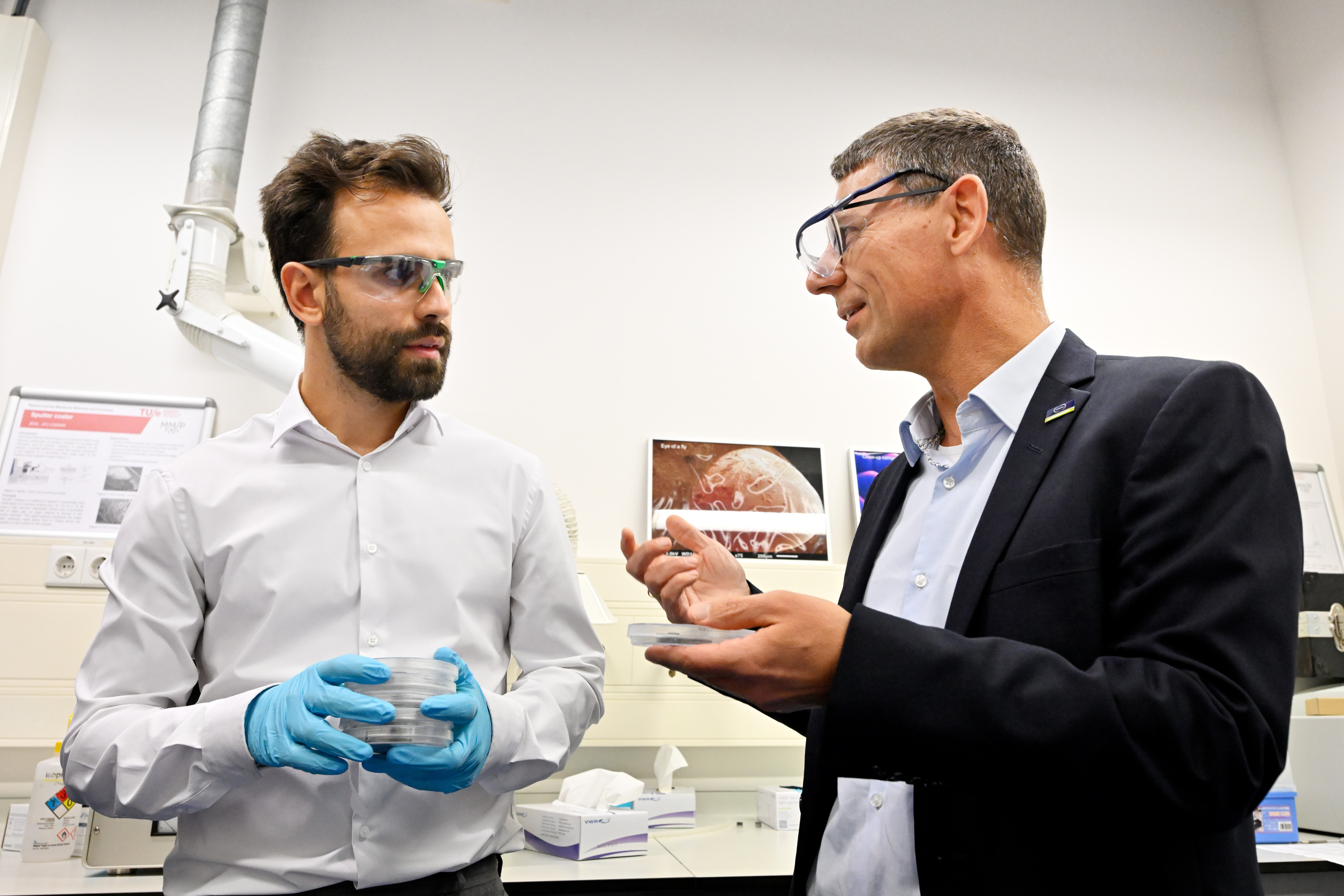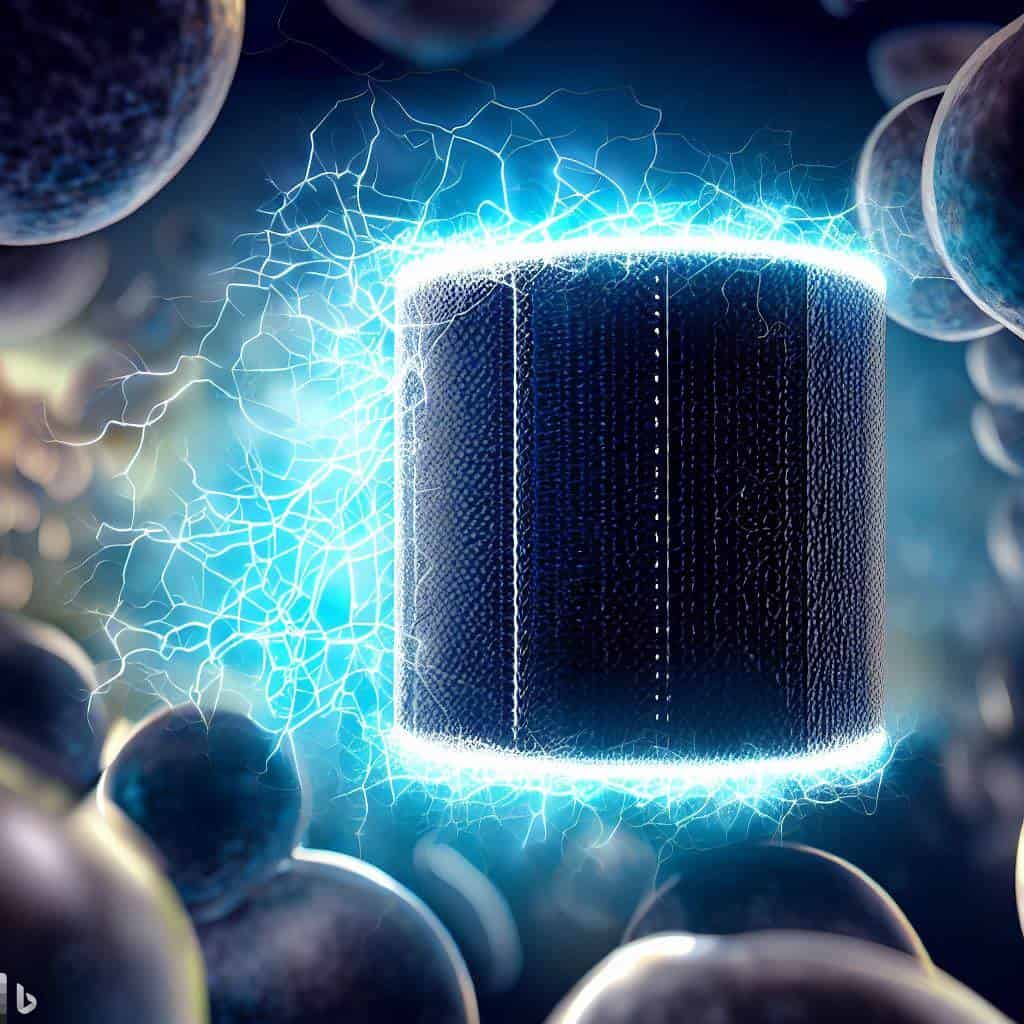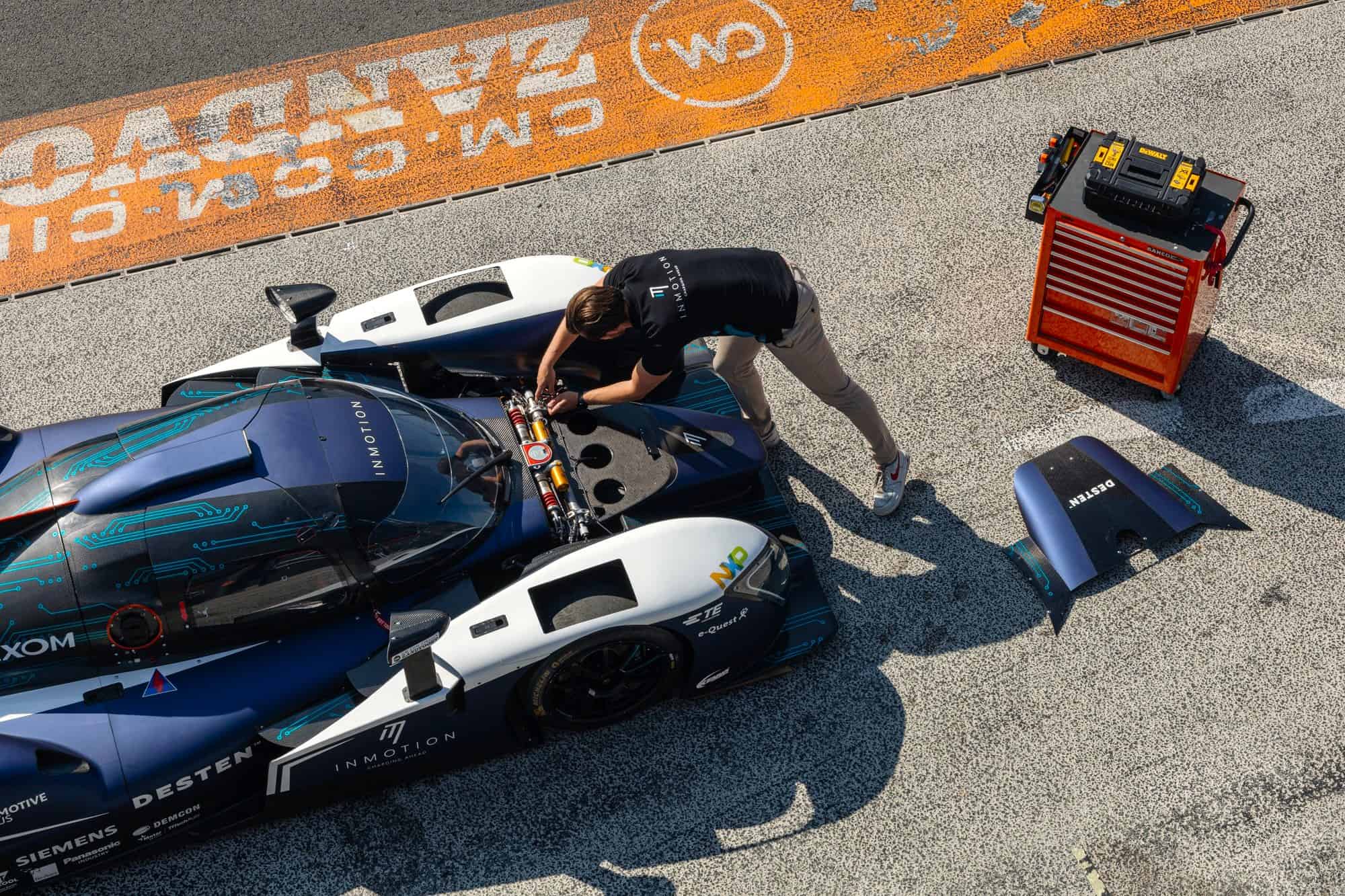
Efficient and cheap batteries are indispensable in the energy transition. It is the only way to completely switch to renewable energy sources such as wind, water, and sun. “It is important for society to make long-duration energy storage available at a reasonable price. We are working hard on that,” stated Hartmut Gross, Director of New Business & Technology at Schunk Group. The German tech company is a leading supplier of high-tech materials such as carbon, technical ceramics, and graphite. Schunk Group is working with the Eindhoven University of Technology (TU/e) on a new type of redox flow battery electrode. Associate Professor of Chemical Engineering Antoni Forner-Cuenca is leading the research at TU/e. He has been researching electrodes in flow batteries since 2017 and developed the so-called non-solvent-induced phase separation (NIPS) electrodes.
Why you need to know this:
The generation of renewable energy is improving, but storing it is still difficult. To make the energy transition successful, storage is key. Technological developments in this area are therefore incredibly important for the future.
Suitable for residential areas
A flow battery is an electrochemical system. Two different fluids containing redox materials (for example metal ions) are pumped through the cell. The chemical energy involved can then be converted into electrical energy that we can use on the grid. Unlike a lithium-ion battery, a flow battery is suitable for storing energy for longer periods. “A lithium-ion battery can hold sustainably generated power for up to four hours. With flow batteries, you can store power for as much as eight to ten hours,” Gross explains. Also, according to the expert, a flow battery is not as easily flammable, unlike many other batteries, and suffers almost no degradation. Forner-Cuenca: “You can charge and discharge the battery thousands of times without losing capacity. The electrolyte can be fully recovered at very low cost over time during operation and remains its commercial value like an asset.”

Material and composition
Current redox flow batteries often contain electrodes made of carbon. The NIPS electrodes are made of a polymer structure, which is then carbonized in a thermal procedure. These electrodes have a three-dimensional structure, like a honeycomb. This allows for better transport of fluids and mass, but it also comes with challenges. “For example, the material shrinks a bit in the process. Solutions must be found for these structural changes,” Gross says.
Game changer
Despite the challenges, he sees this technology as a big step in the energy transition: “It is a game changer. With flow batteries, we can make renewable energy widely available and overturn all the arguments of the fossil fuel lobby at once.”
Now, generating renewable energy with solar panels costs about four cents per kilowatt hour, depending on the location. The energy storage cost is still 10 to 12 cents per kilowatt hour in small scale projects. “But those costs are going down more and more due to developments, while capacity is going up. You also saw that trend with the development of solar panels with its dramatic cost reduction,” Gross adds.
What is a flow battery?
A flow battery is an electrochemical system. Two different liquid electrolytes containing dissolved redox molecules are pumped through an electrochemical stack. At each compartment of the electrochemical cell (anode and cathode, separated by a membrane), the redox molecules exchange an electron. This generates an electric current that can be collected. Here the electrodes play a key role as electrochemical reactions happen on the surface of these materials. A flow battery can be recharged by sending current through the system in the opposite direction. This makes the redox molecules return to their original state. There are several types of flow batteries on the market, including redox, hybrid, membrane-less, organic, inorganic, etc. Forner-Cuenca and Gross’ research focuses on new electrodes (NIPS) for redox flow batteries.
Scaling up
Forner-Cuenca: “We have tested the NIPS electrodes in the laboratory, and now it is time to scale them up to an industrial level. For this, we are working with Schunk, who has a lot of knowledge from the industry about scaling up such new technologies.” Gross adds: “We believe that NIPS electrodes have the potential to double the power density of flow batteries. That means halving battery size and cost.” He expects to offer the battery component to the first customers in 2025.
Special collaboration
The financing for this project was designed exceptionally. Normally, a consortium of different parties around a scientific research project knock on the government’s door for (part of the) funding. That process often takes a very long time, Gross knows from experience. “It doesn’t fit with the way of working in industry. “Schunk has therefore set up an internal innovation fund where employees can apply for funding for a project. The collaboration with Forner-Cuenca’s research group was also financed through Schunk’s fund. Gross: “We then hope to be able to put a product on the market at the end of the project – which is still 2.5 years away.”

Further development
But before that happens, the experts still have challenges to solve. “It is now important to make the electrodes larger and more mechanically stable. For use in industry, it is important that they are more robust so that the materials can also be transported more easily, for example,” Forner-Cuenca said.
In addition, the team is also thinking about scaling up production of the batteries themselves. What is needed to do this? And how long will this whole process take? These are important questions to be answered in the coming years. “Even if we can use the technology on an industrial scale, development is not yet finished. It is important that science continues to research and that we keep making improvements. You can see that happening with solar panels as well. So, it doesn’t stop after this project,” Gross continues. His vision for the future: “I expect that in the future there will be a package of flow batteries at every solar or wind farm.”







